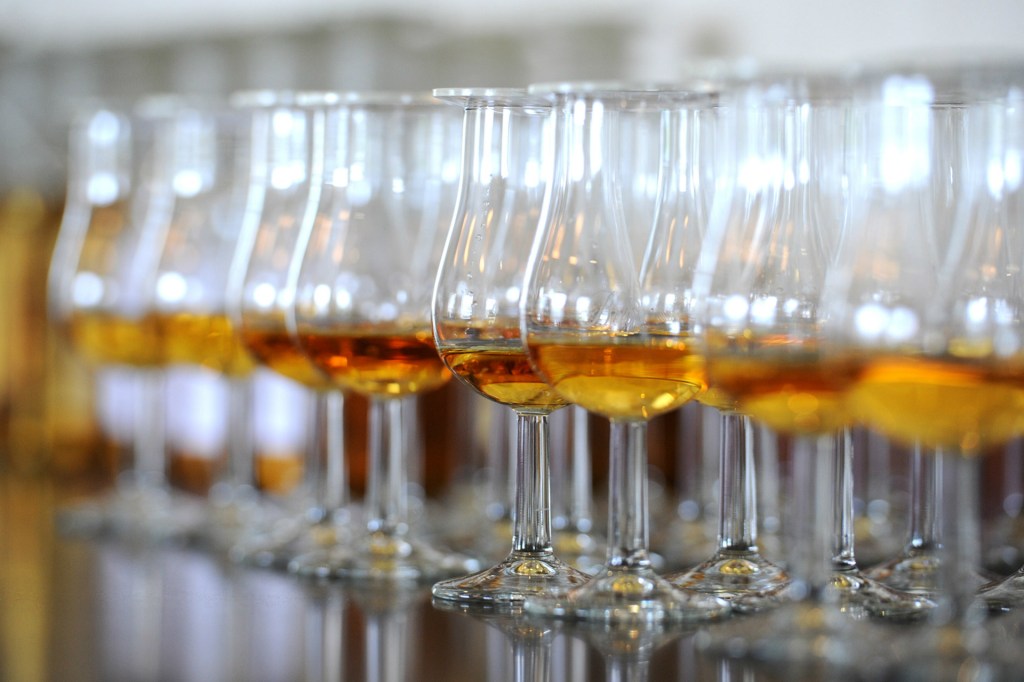Whisky Route #1: A Whisky Tour Accross Scotland’s North Coast 500 [NC500]

Whisky Route 1: A Whisky Tour Across Scotland’s North Coast 500 [NC500]
All around the world, a movement of whisky enthusiasts and whisky tours is snowballing, with more and more people embarking on a pilgrimage to the homeland of Scotch.
A trip through Scotland is also a concoction of jaw-dropping landscapes, so beautiful and almost unreal, natural and wild, fascinating in heritage and history, with a thriving cultural life, which adds to this country’s magnetic attraction for travellers.
Whisky production dots around a map of these beautiful sceneries, between historic hamlets and, in recent years, cutting-edge, design-led buildings, offering choices aplenty for visitors to set off on a fantastic adventure.
To those whose hearts beat for the liquid sunshine or for those eager to discover its wonders, here are a few tips to help you plan your whisky tour across the North Coast 500 in Scotland.
Whisky Route 1: Scotland’s North Coast 500
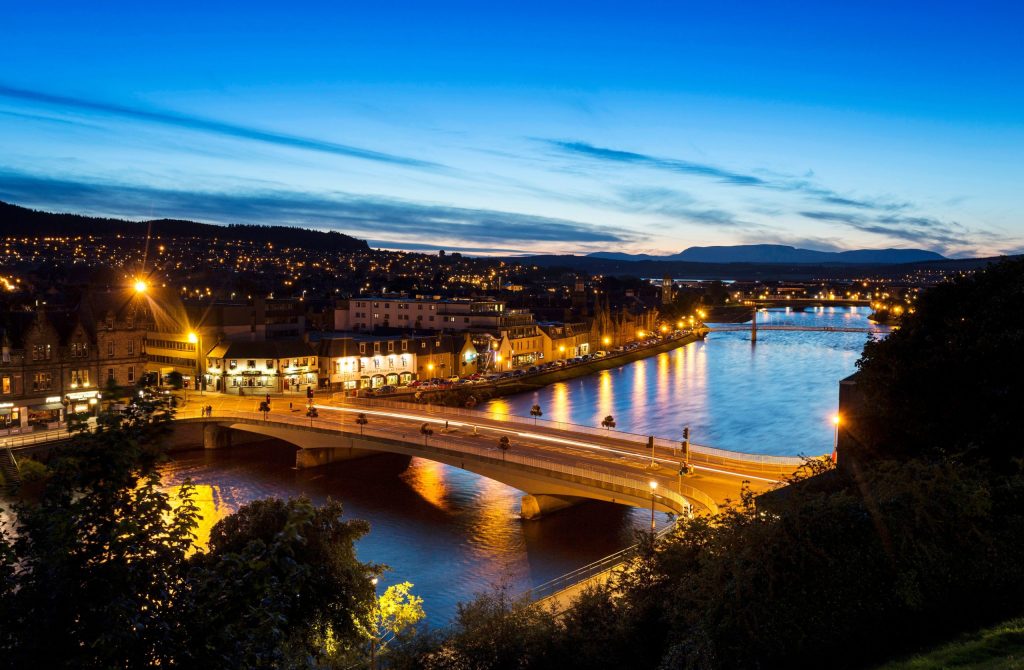
Inverness – Picture: VisitScotland
Let us begin our adventure in the country’s Far North, following the world-famous North Coast 500, hopping off a couple of times to reach whisky spots that cannot be missed.
This route starts and ends in the beautiful city of Inverness, encompassing the northern Highlands across the regions of Caithness, Sutherland and Ross-shire, where some of the most remote settlements and some great distilleries can be found.
For our whisky journey, we will focus on the Eastern segment of the route, but for those wishing to explore more, the Northern Wild West is a treat for the eyes.
But let’s not digress too much; it’s time to set off. So prepare your backpack, keep those waterproofs handy and get a spare glass ready. Let’s go!
A Northern Detour: The Orkney Islands
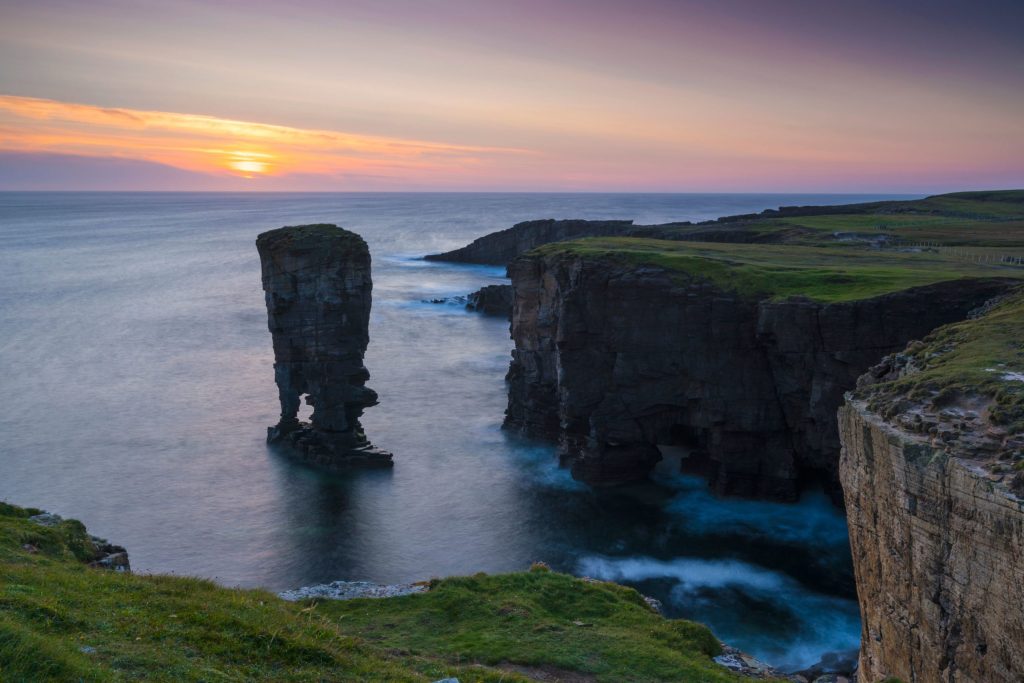
Green Spaces – Picture: VisitScotland
Our first stop takes us just a few miles from the NC500’s route, but the detour is worth it for the whisky-thirsty traveller. Amid enchanting shores, miles of green land and Neolithic relics, we are out to explore the Orkney Islands.
This majestic archipelago not only offers some incredibly fascinating archaeological sites recognised by UNESCO, such as Skara Brae, the Stones of Stenness, the Maeshowe chambered tomb and the Ring of Brodgar, as well as stunning landscapes and great food, but is also an excellent destination for spirits and ale enthusiasts.
You can visit the northernmost whisky distillery in Scotland: Highland Park. The distillery, enclosed in stone-walled buildings south of Kirkwall, proudly highlights the islands’ Viking heritage and offers a variety of tour experiences for the whisky virgin and the connoisseur alike. The character of its whisky is strictly related to the peat that grows locally, which is rich in heather, resulting in notes of herbal smoke.
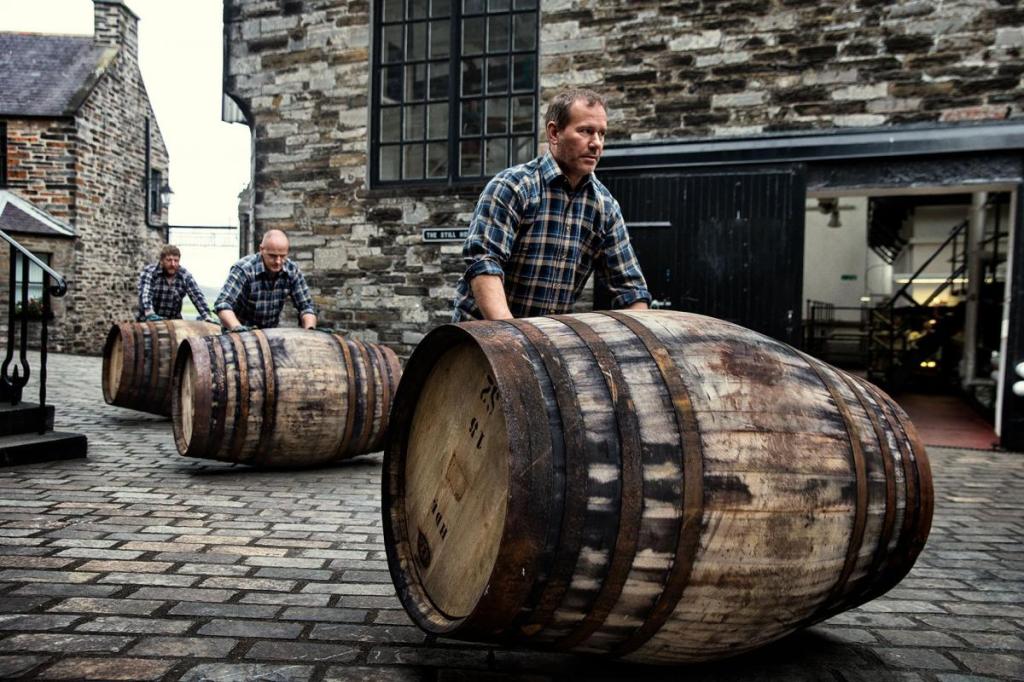
Picture: Highland Park Distillery
Heading south for half a mile, you’ll find the distillery of Scapa set in a stunning location overlooking the Scapa Flow, a sound where wrecks of a German fleet from the First World War can still be found in the sea. Yet, despite the beauty of the site and its historical significance, Scapa’s visitor centre is surprisingly young, having opened only in 2015. Here, visitors can taste their Scapa’s characteristic unpeated, honey-sweet drams.
However, if your palate craves the taste of other spirits, fear no more, as in recent years, the islands have witnessed the birth of several exciting distilling ventures. For example, in Kirkwall, you will find The Orkney Distillery. This modernly designed venture opened in 2016, producing Kirkjuvagr Orkney Gin, the vodka, gin and liquors by Deerness Distillery in the eastern mainland, or even rum, which is made on the small island of Lamb Holm by J. Gow and which is close to the Italian chapel, a church built by war prisoners in 1939.
Those looking for a good pint can rely on the tasty refreshments offered by Orkney Brewery or Swannay Brewery, located on the western mainland.
However, to have a relaxing night with a great spirits selection and food pairings, you should visit the Orkney Hotel, a great hub to taste some local spirits. In addition, foodies can indulge in a bite of local delicacies from staple restaurants such as The Foveran, Hamnavoe’s Restaurant or The Commodore.
Surf, wildlife and whisky: Thurso
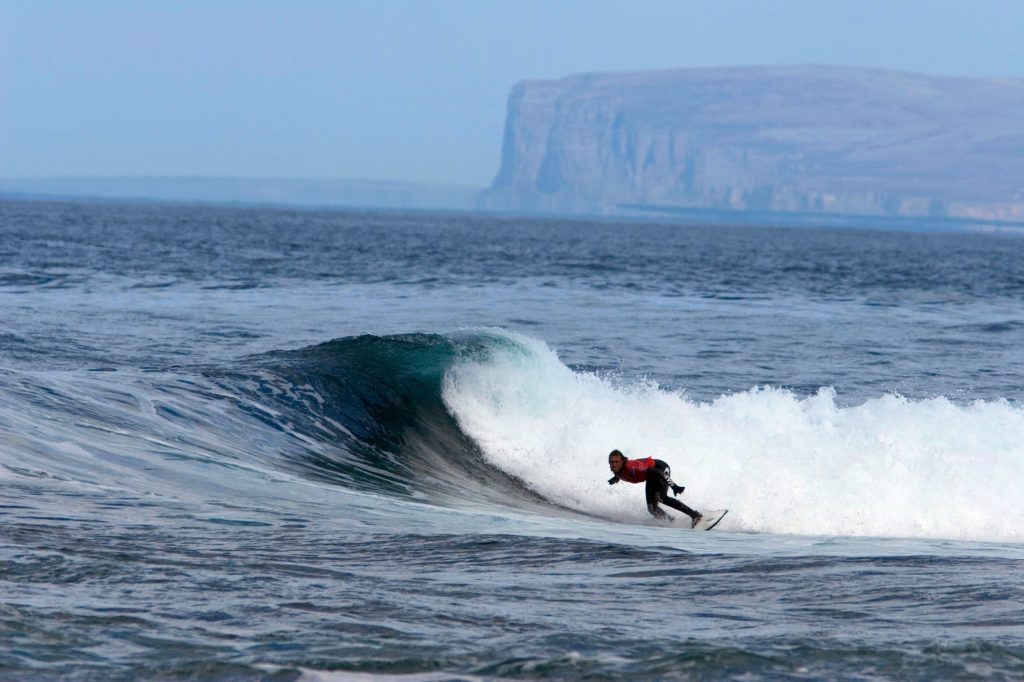
Picture: VisitScotland
A short ferry journey will take you back to the mainland in Scrabster, near Thurso, which is exactly where our journey takes us next, back on track on the NC500.
The most northerly town in mainland Scotland, Thurso is a popular surfing area, with people coming from all over the world to enjoy its wild waves. However, for those who want a more peaceful lifestyle, the town and its surroundings are a wonderful place to immerse in nature and wildlife.
Thurso is also home to one of the first ventures leading the movement of new whisky producers in the past decade: Wolfburn. Whisky making is not new to the area, as the new distillery was meant to rebuild the name of the old Wolfburn distillery, which ceased production 150 years ago. The new distillery started producing whisky only in 2013, but the brand’s name is already popular in the whisky world. Although its looks are pretty far from the romanticised idea of a whisky distillery, the efficient setup, with all the production chain in one large hangar-like building, allowed the two first operators to produce whisky. Light and fruity, with mildly peated variations, this young whisky is an interesting example of the new insight into the future of whisky.
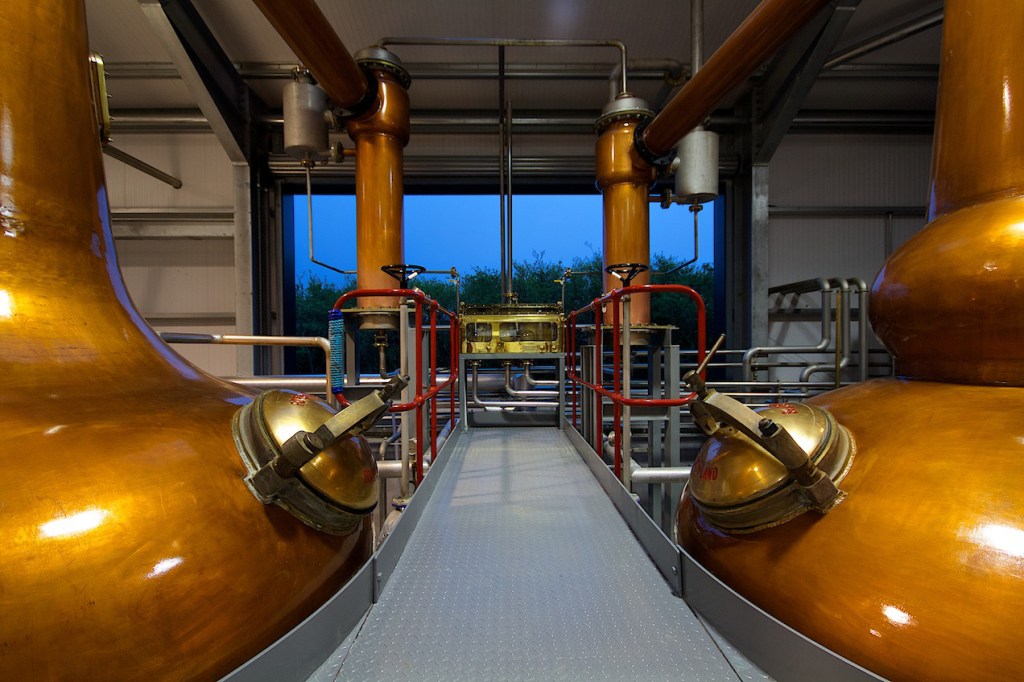
Picture: Whisky.com
Leaving Thurso, it’s time to head towards the limits of mainland Scotland. Driving east, on bending country roads offering flashes of seaside when emerging on the coast, make your way towards Dunnet Bay. First, stop at Dunnet Bay Distillery for a tour or a wee taster if you need refreshments. Then, head north on a quiet, almost desert road, leading you to Dunnet Head, where dramatic cliffs crowded with seabirds and incredible games of light on the ocean will capture your gaze and visions from Orkney from afar.
If you want more of these coastal views, head east towards John O’Groats and Duncansby Head, where you can try some ales from John O’Groats Brewery and admire the island of Stroma, which was abandoned entirely only a couple of decades ago and can arrange a visit.
Back to our whisky journey, let’s head south to the fishing town of Wick.
Of herrings and spirits: Wick
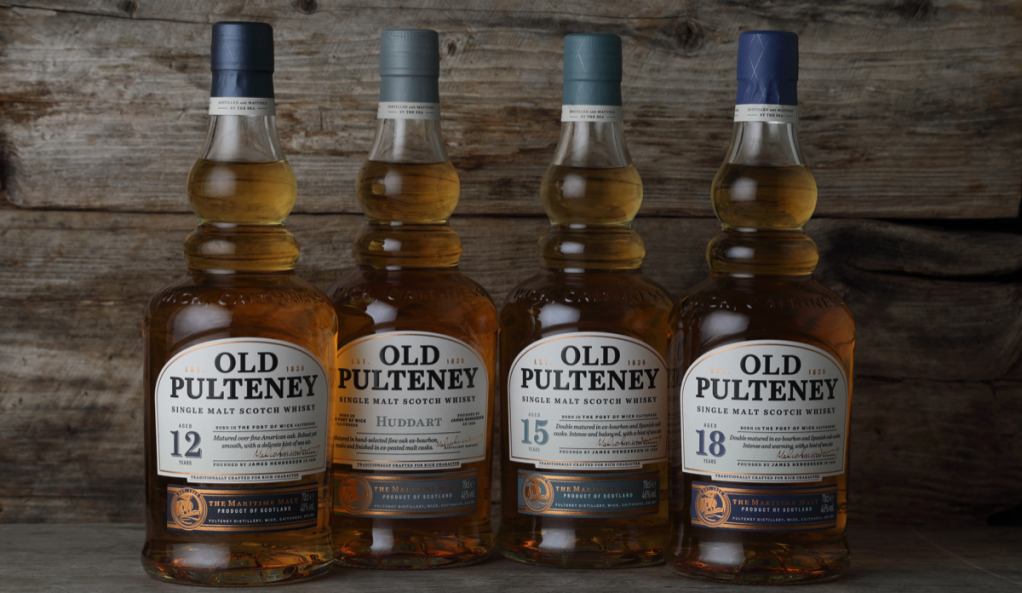
Picture: Whisky Advocate
Driving across the barren and windswept countryside and passing through a few villages, we reach the town of Wick and the historic distillery of Old Pulteney. Here, you will learn about their whisky and look back in time to the village’s past. Pulteney was originally a separate town created to host the fisherman population during the boom of Wick’s herring commerce. After the distillery was founded in 1826, seasonal workers would alternate between the two trades: whisky in winter and herring in summer. With the herrings sailing towards Scandinavia and Russia, some extra whisky barrels may likely have known an early export to long latitudes.
A stroll on the river at night or visiting the local museum is a lovely pastime whilst you are here. Head to the Mackays Hotel Whisky Bar to sample their good spirit selection.
For a bite in town, you can head to the Bord de L’Eau for a French-style evening or the Norseman Hotel’s Restaurant.
Past glories renewed: Brora
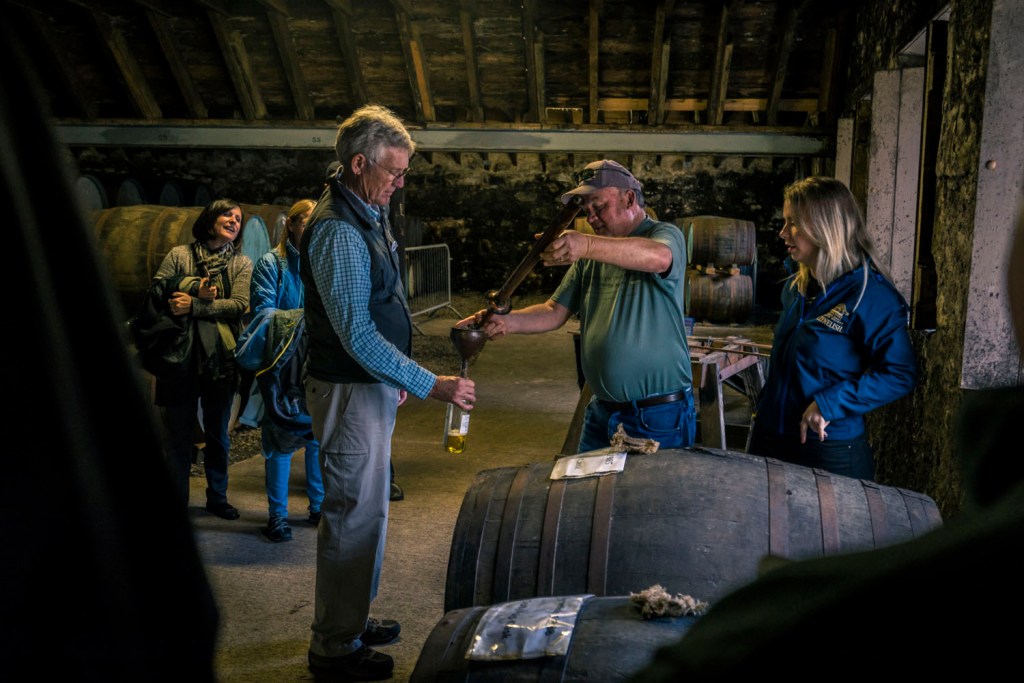
Picture: Clynelish Distillery
Navigating south on a twisting road that offers breathtaking glimpses of the coast, passing through coastal villages such as Lybster and Helmsdale, the latter made famous by the Gold Rush in the 19th century; you’ll reach our next whisky pit-stop, Brora.
The village offers glimpses of the past and present of distilling, as it’s not only home to the Diageo-owned Clynelish Distillery, which is now undergoing a major refurbishment, but where the distillery of Brora, which fell silent in 1983, is now being brought back to life.
Therefore, even if, at present, you will mainly find construction works around the distillery (which can be somewhat interesting in its own right, this is undoubtedly a place to keep your eyes glued for the future.
History and drams: Dornoch
It’s time to enjoy some proper sightseeing: the village of Dornoch is a beautiful place for a relaxing walk on the beach or a stroll around the lovely and peaceful historic centre with its cafes and shops, but you are also in for a great whisky tasting. The Dornoch Castle Hotel is the perfect place for this. This stunning converted Castle hosts a unique whisky bar with a great selection of old-sCastlehiskies and many new exciting expressions by independent bottlers Thompson Bros, who also runs the bar. More recently, Phil and Simon Thompson, whose family has been running the Castle Hotel for years, have started their distillery right in the backyard of the Castle, in what used to be the old fire station. In this quirky and fascinating space, they set up an organic production of whisky and gin, focusing on traditional methods that aim to bring back the typical estery flavours of the 60s and 70s.
A Pictish touch: Tain
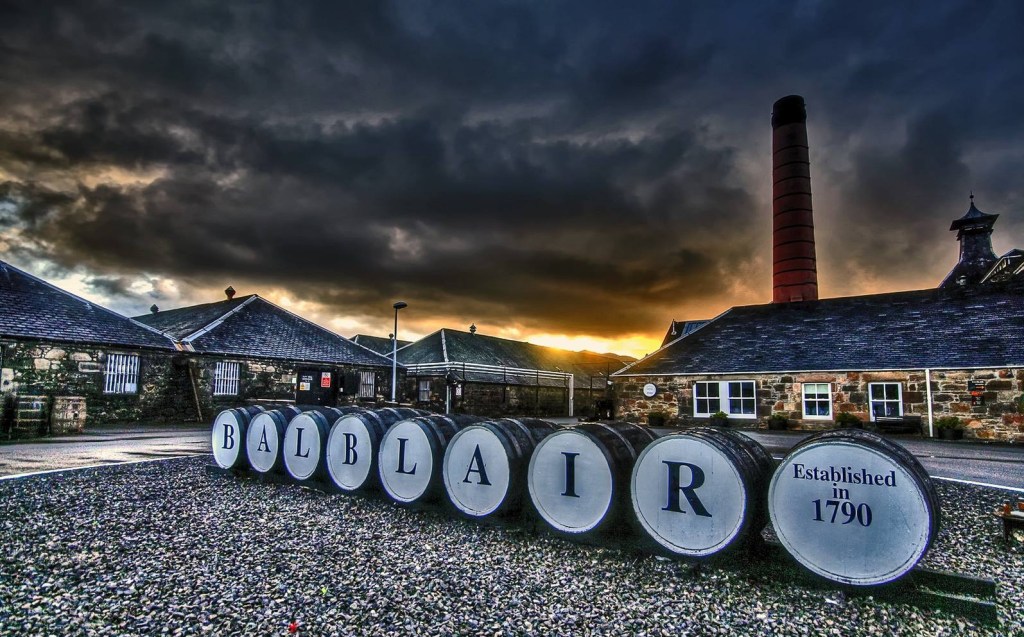
Picture: Carrgolf.com
Leaving the Dornoch Firth behind, it’s time for us to head towards two well-known distilleries. First, we detour from the A9 and head towards the small village of Edderton, where we will find Balblair Distillery. The scene before has pretty much all you’d want from a traditional distillery lost in the Highlands. But, not for nothing, it was chosen as one of the locations for the film The Angel’s Share, a lighthearted story of whisky and redemption. The distillery, considered the fourth oldest in Scotland, has a homely feeling and deserves a visit, maybe followed by a walk to the Clach Biorach, a prehistoric standing stone with Pictish carvings.
But Balblair is not the only whisky brand which the Picts have somewhat influenced. Returning to the main road and heading to Tain, you will find the place where one of the most globally renowned single malts is produced: Glenmorangie Distillery.
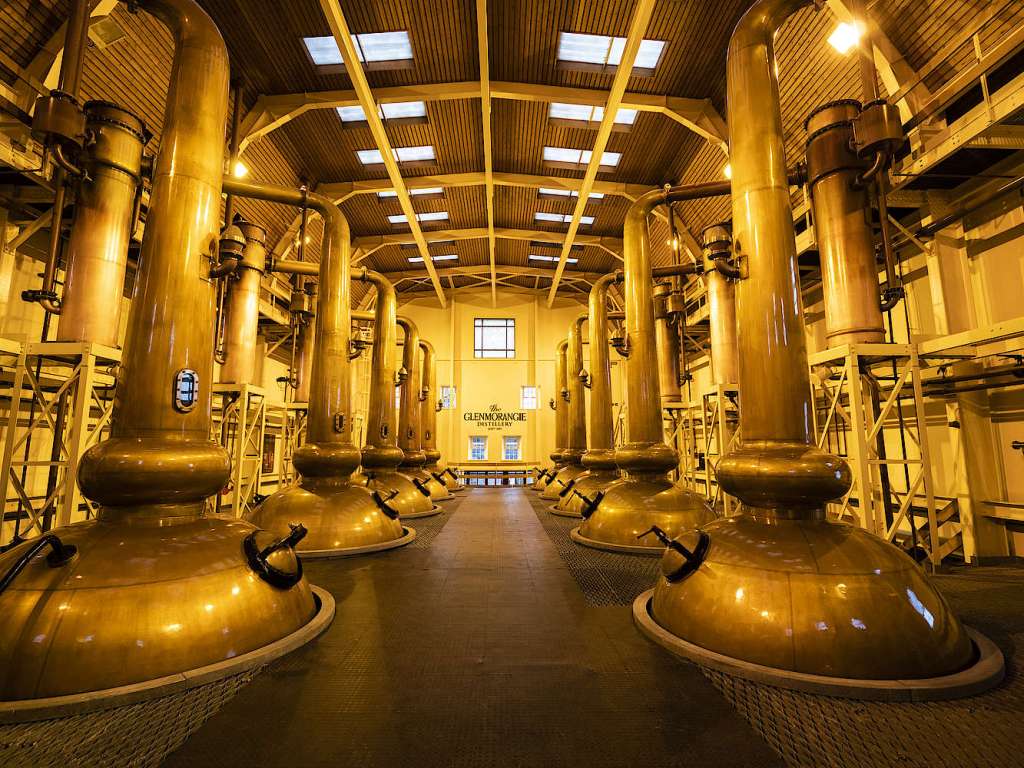
Picture: Whisky.com
Nestled on the Dornoch Firth’s shore, the distillery has a traditional feel. Particular attention to design in the visitor areas can be noticed – probably being owned by a fashion brand (LVMH) may have something to do with this. Glenmorangie’s symbol comes from a Pictish carving on the Hilton of Cadboll Stone. Entering the still house feels much like being in a small cathedral, with the high roof making space for the tallest stills in the industry. An exciting aspect is looking at the various projects undertaken by the company, one of which is an environmental scheme to reintroduce oysters to the Dornoch Firth and, lately, a new extension to the distillery, which should be unveiled soon.
Stags and whales: Alness
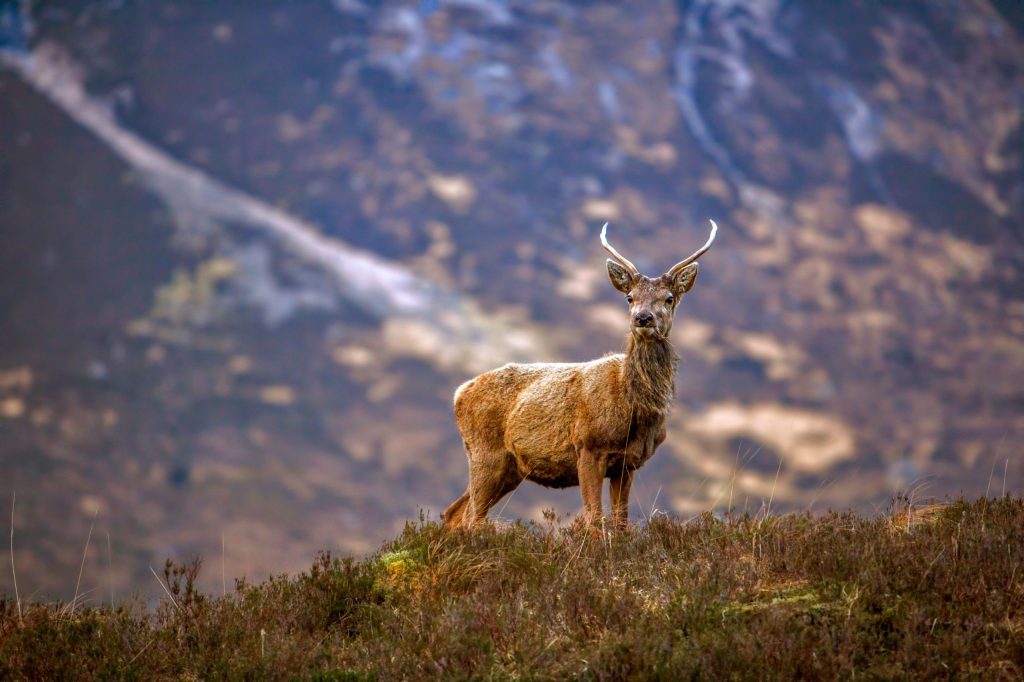
Picture: VisitScotland
Our next stop leads us to the Cromarty Firth, popular among tourists as the port of Invergordon welcomes hundreds of cruise liners yearly. Here, we can spot the plant of Invergordon Distillery, Whyte & Mackay’s flagship grain engine for blends. The distillery is not open to the public, but we can glimpse it and dig into a more famous brand later, just a few miles from here. Finally, driving to Alness is challenging, and it is difficult to miss the signs leading to Dalmore Distillery. Although at first sight, the location doesn’t seem highly appealing, once you reach the shore where the entrance is located, you’ll be rewarded: a beautiful tree stands on the beach overlooking the firth, and on less busy days, it gives the place a feeling of calm and peace. The thick stone buildings balance elegance and a sturdy, industrial look.
On the way out of Alness, you can also spot Teaninich Distillery, which produces mainly whisky to go into Diageo’s blends and some Single Malt for the Flora&Fauna range.
It’s time to head back south, but if you have time, don’t miss the chance to walk to the Fyrish monument near Evanton. This construction, built in the late 18th century to represent an Indian port, offers a spectacular view of the Firth and Ben Wyvis.
Maltings, monsters and ghost dogs: Inverness
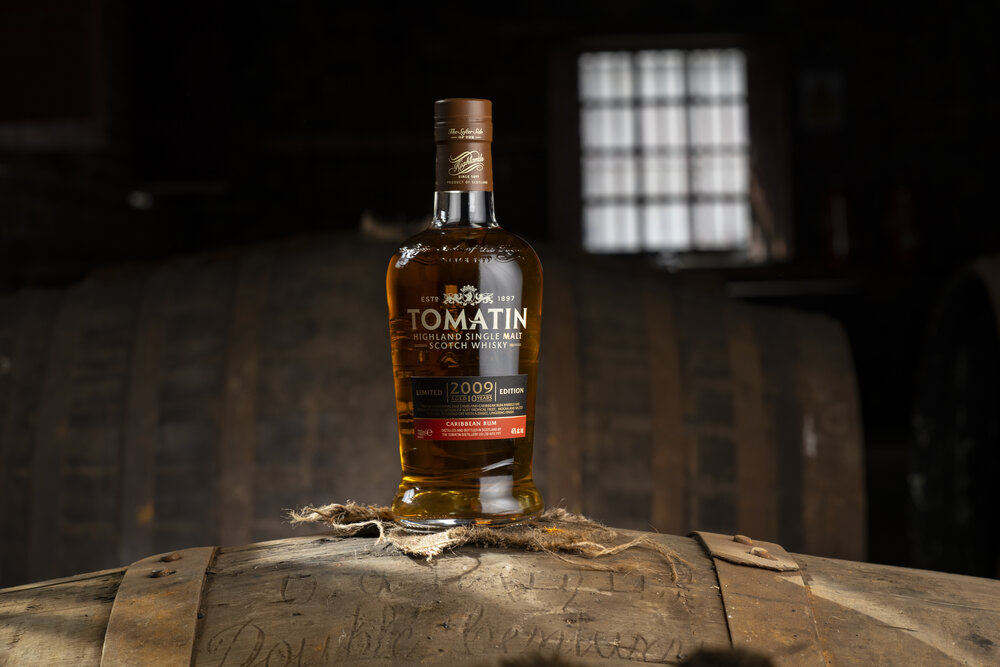
Picture: John-Paul Photography
We will cross over the Black Isle just before getting to the Highland Capital of Inverness. If you are a beer enthusiast, you will thoroughly enjoy a detour at Black Isle Brewery near Munlochy. The production is organic, and they have a lovely bar in the centre of Inverness serving tasty pizzas! On the way south, you will probably pass Dingwall, where one of the newest distilleries, GlenWyvis, started making whisky in 2017, becoming the first whisky distillery owned by the community. Whilst their whisky waits to be ready, they also produce Goodwill Gin.
But as we look to visit another distillery, we should head to Glen Ord, just outside Inverness. This is conveniently reachable by train, and, interestingly, this distillery has its maltings that serve most of Diageo’s plants in the North. It is also an excellent opportunity to try their single malts, which are rare to find as most of its production goes under the Singleton flagship to the Asian Market.
With one last detour from the NC500, we pass through Inverness, where we will return to end our journey. But first, we must finish our distillery bucket list with an exciting breed: Tomatin Distillery. Although getting here by bus is an option, it is pretty impractical, and a car would serve you better. The whole plant seems huge and relatively industrial.
However, you are in for a treat if you are visiting, as they offer a very in-depth standard tour, with the possibility to jump into an unused mash tun and see a part of the production from the inside, and ending with a great selection of distillery exclusives, straight from the cask (which you can bottle). One warning: beware of the number of drams as it’s said that a Ghost dog can appear near the village of Tomatin. Many sightings may have to do with the…ehm… the quality of the whisky!
Back to Inverness, there is nothing quite like strolling on the river of the Highland capital, walking along the banks up to the Ness Islands or having a good look around the city from the Castle Hill viewpoint. If you are in the centre, pubs like McGregors, Black Isle or Hootanannys will delight you with tasty ales and live music. However, if it’s a whisky bar you are looking for, there are a couple of treats around, both of which are not the easiest to find (but that offer extreme cosiness). One is The Malt Room, next to the Victorian Market, and the other is The Angel’s Share, which has a great selection of Gins. Head to Encore Une Fois for tasty Old fashioned and other cocktails.
And now, a well-deserved rest.
I hope you enjoyed the ride, Slainte Mhath!
Festivals and events
Highland Whisky Festival
This is one of the newest festivals and an answer to the northern distilleries usually cut out from the big events. Eight have teamed up to organise a week of incredible tastings and fun. It covers most of the distilleries we have mentioned above.
Spirit of The North
Picture: Visit Scotland’s local celebration of the spirits industry in the North of Scotland, which usually takes place at Bogbain Farm, Inverness, in September.
Dornoch Whisky Festival
A grand celebration of whisky makers of the Highlands, usually held at the end of October.
Whisky journey top tip #1: pack up the bottles
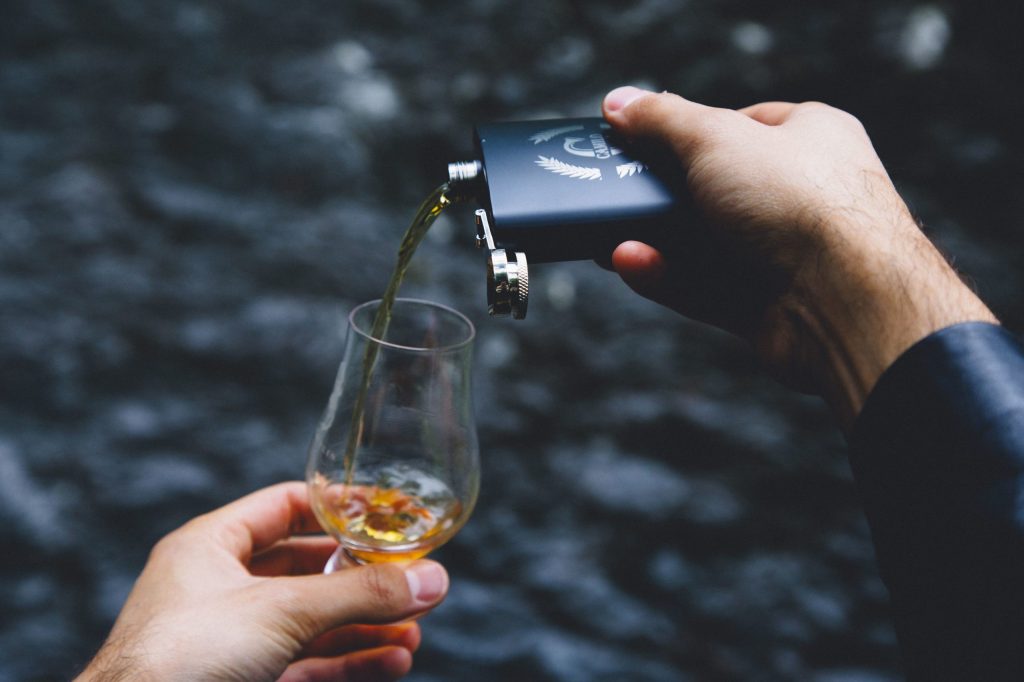
With many distilleries located in pretty remote places, a car comes in handy, but chances are that the designated driver for the day will have to miss out on the tasting (oh no, the best part!). So, whilst some people will not be too heartbroken from leaving their share to someone else, this can be a real shame for others.
Many distilleries now offer a driver’s dram option and bottle the tasting set to try the whisky when you reach your accommodation (or when you switch the driving seat with someone else). However, this is not always the case, and it’s always good to pack up a few small bottles to pour the drams. A hipflask is a good option, too, and although you can keep just one of the whiskies on the menu, it’s an excellent companion for excursions, especially in chilly weather.
Even if you are not driving, you may want to keep some whisky as a souvenir to savour and share later on, enjoying a sensorial throwback of your trip!
Continue reading…
Whisky Route 2: The Malt Whisky Trail: Speyside [World’s Whisky Capital]
Whisky Route 3: Whisky Hopping Across the Highlands
Whisky Route 4: The Lowlands, a reviving whisky region

